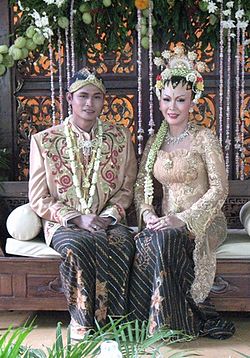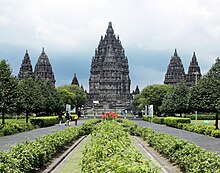Javanese custom eschews conflict in favour of woolly consensus

No one beats about the bush quite like the Javanese, an ethnic group from Indonesia’s most populous island. Chronicling their mores in 1960 Clifford Geertz, an American anthropologist, noted that proposals for arranged marriages often start with the groom’s father visiting the bride’s family and saying something as vague as: “The frost in the morning means rain in the evening.” More metaphors ensue as the conversation slowly meanders towards the point. The future in-laws then counter with false protests, saying that their daughter is unworthy. This ritual is repeated a few times. When the bride and groom finally meet, direct eye contact is avoided and no one talks of weddings.
Indonesia is a vast archipelago with hundreds of ethnicities spread across 13,000 or so islands. But Javanese dominate, with 95m people, or 40% of the population. There is much that is distinctive about Javanese culture, from shadow-puppet plays to tempeh, a fermented soyabean cake. The Javanese language is the 12th-most-spoken tongue in the world. Traditional Javanese religion blends Hinduism, Buddhism and Islam. To this day, the sultan of Yogyakarta, a Javanese royal, throws nail and hair clippings into the sea and a volcano each year to appease the gods.
ECONOMIST.COM
How the mores of Indonesia’s biggest ethnic group shape its politics
No one beats about the bush quite like the Javanese, an ethnic group from Indonesia’s most populous island
Javanese people

A Javanese bride and groom wearing their traditional garb
| |
| Total population | |
|---|---|
| c. 99 million[citation needed] | |
| Regions with significant populations | |
| 95,217,022[2] | |
| 1,500,000+[3] | |
| 1,500,000 (2014)[4][5] | |
| 190,000-240,000 (2018)[6][7] | |
| 151,021 (2016)[8] | |
| 150,000 (2018)[9] | |
| 114,000 (2014)[10] | |
| 93,000 (2017)[11] | |
| 81,000 (2016)[12] | |
| 48,000 (2014) | |
| 33,000 (2014) | |
| 28,000 (2014) | |
| 21,700 (only counts Javanese Surinamese)[13][14] | |
| 7,000-16,000 (2016)[15] | |
| 12,000[16] | |
| 4,100[17] | |
| 2,800[citation needed] | |
| 2,400[18] | |
| 爪哇人 ꦮꦺꦴꦁꦗꦮ Wong Jawa, Tiyang Jawi | |
|---|---|
 一行: 羅登·韋查耶,Tribhuwana Tunggadewi,加查·馬達,蒂博尼哥羅,Raden Saleh 二行:帕庫布沃諾十世,卡蒂妮,蘇加諾,蘇哈托,蘇迪曼 三行:安谷,英卓華,阿卜杜拉赫曼·瓦希德,梅加瓦蒂·蘇加諾普特麗,Dian Sastro | |
| 總人口 | |
| 1億2000萬 (2010 人口普查) | |
| 分布地區 | |
| 語言 | |
| 爪哇語、印尼語、馬來語(主要為散居於馬來西亞與新加坡的人口使用)、荷語(生活在荷蘭及蘇利南的人口使用) | |
| 宗教信仰 | |
| 主要為伊斯蘭教,少數為爪哇民間信仰、基督宗教、印度教及佛教 | |
| 相關民族 | |
| 其他本土印度尼西亞人,如:巽他族、馬都拉族、巴厘族、斯里蘭卡馬來人[1]、開普馬來人[2]、馬來族等 |
爪哇族 (爪哇語:Wong Jawa,印尼語:Suku Jawa)是印度尼西亞的爪哇島一個民族。他們主要分布在島的中部和東部。以8500萬人(截至2009年)成為島上最大的族群,也是印度尼西亞的最大族群。經過幾百年的遷移,他們現在居住在印度尼西亞的大部分省份,馬來西亞,新加坡和南美洲蘇利南。
歷史[編輯]
語言[編輯]
宗教[編輯]
擴展閱讀[編輯]
- Kuncaraningrat. (1985) Javanese culture Singapore: Oxford University Press,

沒有留言:
張貼留言